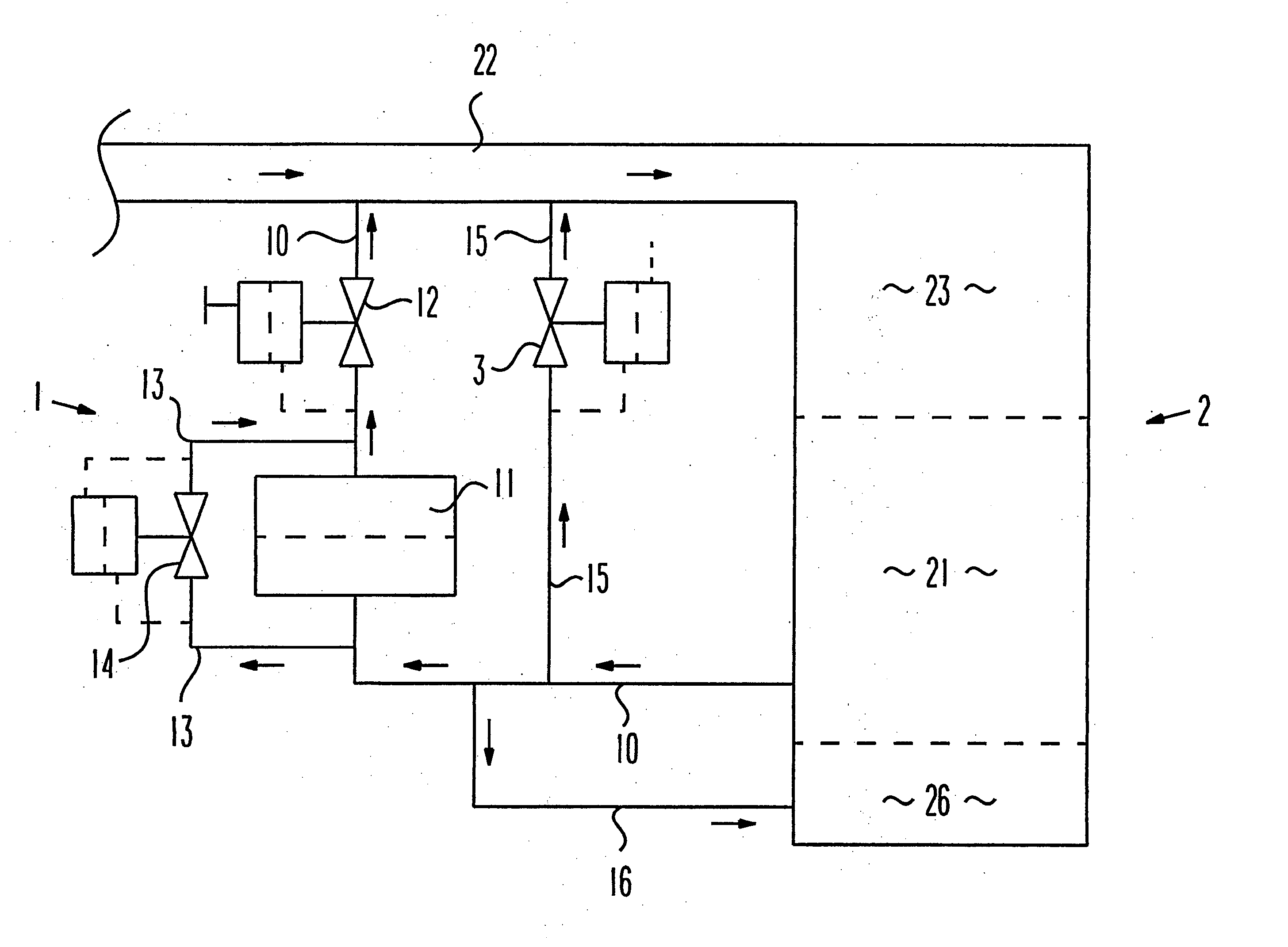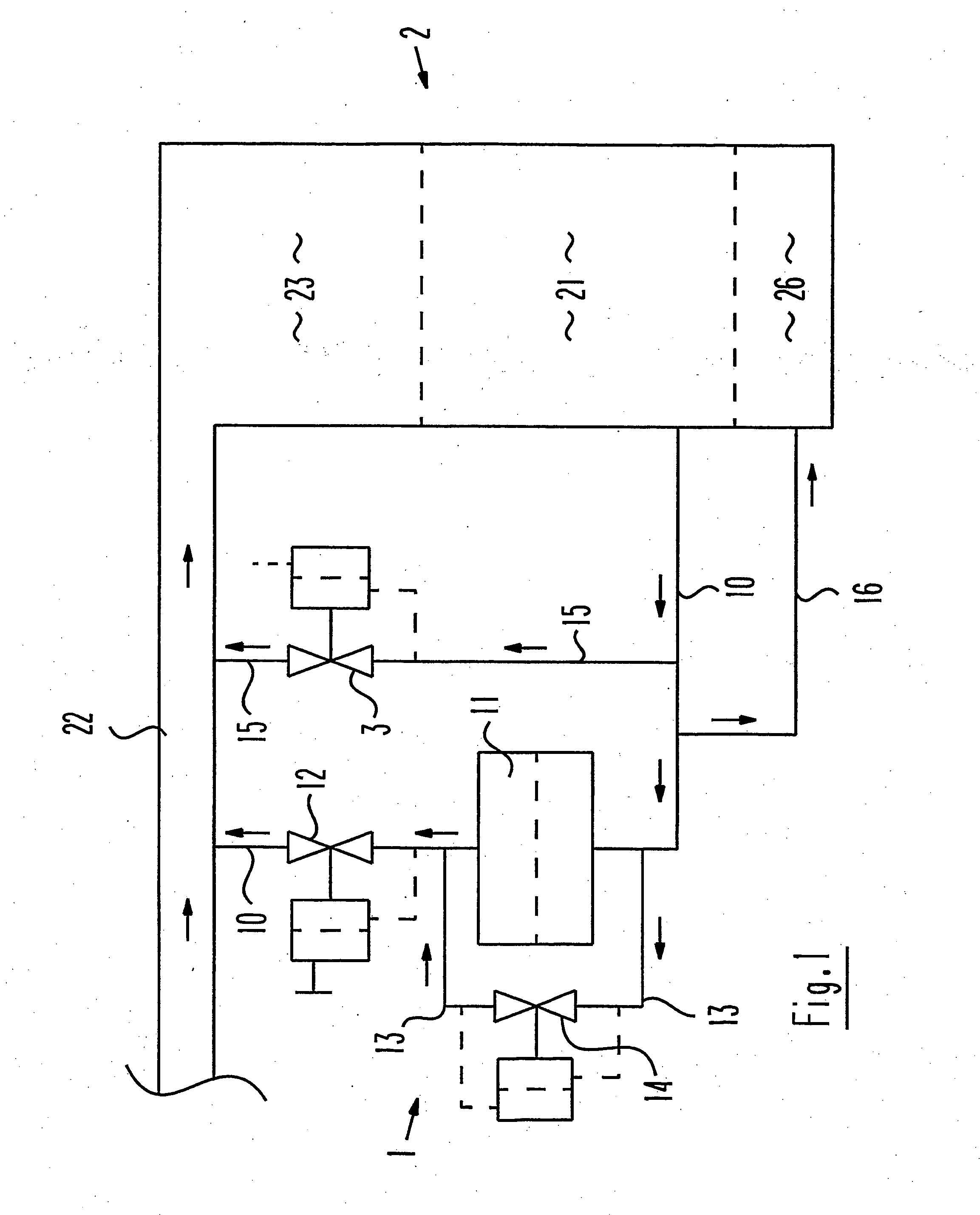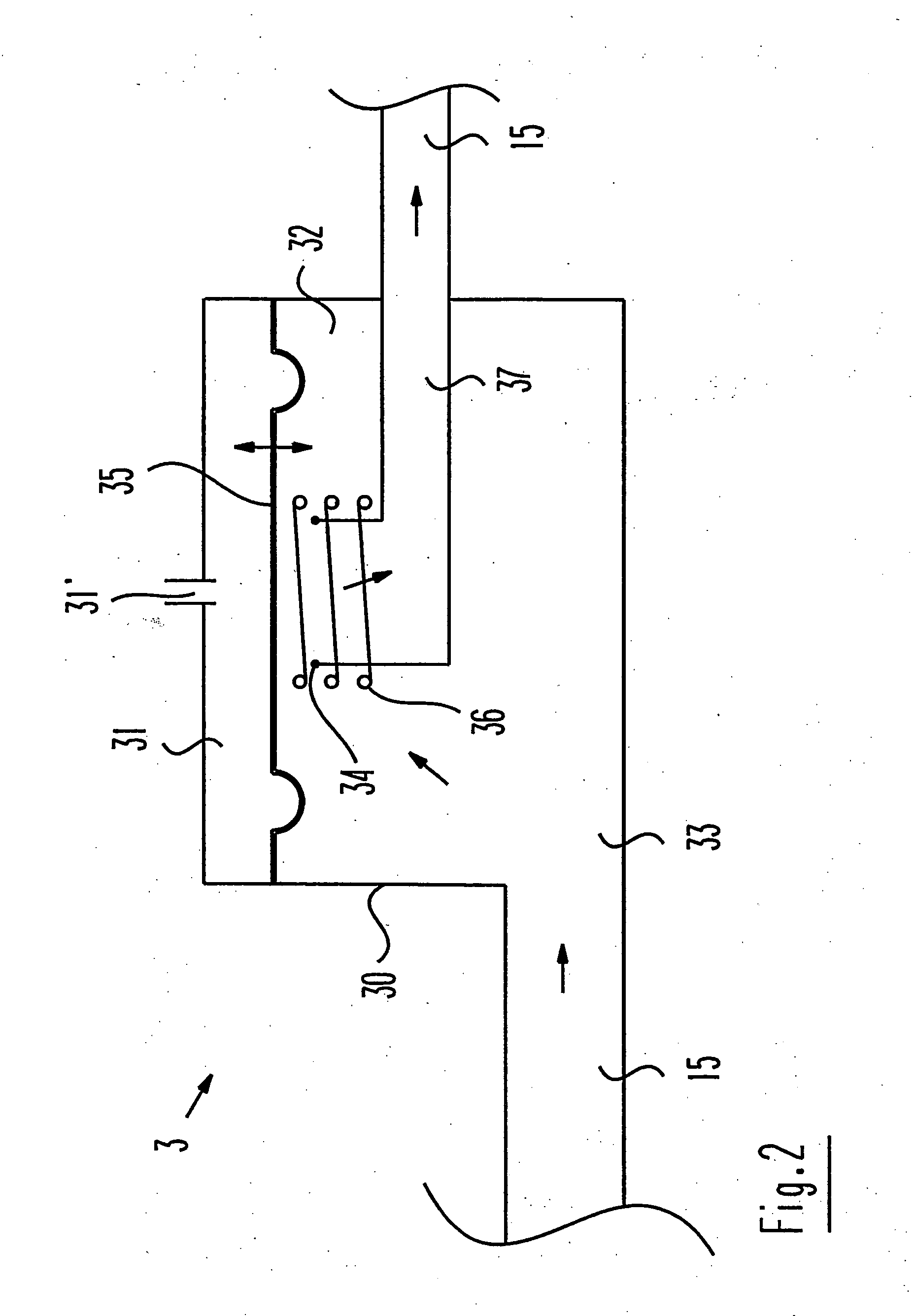Device for crankcase ventilation of an internal combustion engine
- Summary
- Abstract
- Description
- Claims
- Application Information
AI Technical Summary
Benefits of technology
Problems solved by technology
Method used
Image
Examples
Embodiment Construction
[0023] To its extreme right, FIG. 1 of the drawing shows a combustion engine 2 that comprises a crankcase 21 in its lower part and one or more combustion chambers 23 in its upper part. An intake section 22 through which combustion air is supplied to the combustion chambers 23 of the combustion engine 2 ends in the combustion chambers 23.
[0024] An apparatus 1 for ventilating the crankcase 21 is allocated to the combustion engine 2. This apparatus 1 first comprises a ventilation duct 10 that starts in the crankcase 21 and extends to the intake section 22. An oil-mist separator 11 used to separate oil mist consisting of fine oil droplets from blow-by gas that is supplied from the crankcase 21 into the intake section 22 is arranged in the course of this ventilation duct 10. Furthermore, a crankcase vacuum pressure regulating valve 12 is provided in the ventilation duct 10, downstream of the oil-mist separator 11 as seen in flow direction. This regulating valve 12 serves to limit the va...
PUM
 Login to View More
Login to View More Abstract
Description
Claims
Application Information
 Login to View More
Login to View More - R&D
- Intellectual Property
- Life Sciences
- Materials
- Tech Scout
- Unparalleled Data Quality
- Higher Quality Content
- 60% Fewer Hallucinations
Browse by: Latest US Patents, China's latest patents, Technical Efficacy Thesaurus, Application Domain, Technology Topic, Popular Technical Reports.
© 2025 PatSnap. All rights reserved.Legal|Privacy policy|Modern Slavery Act Transparency Statement|Sitemap|About US| Contact US: help@patsnap.com



